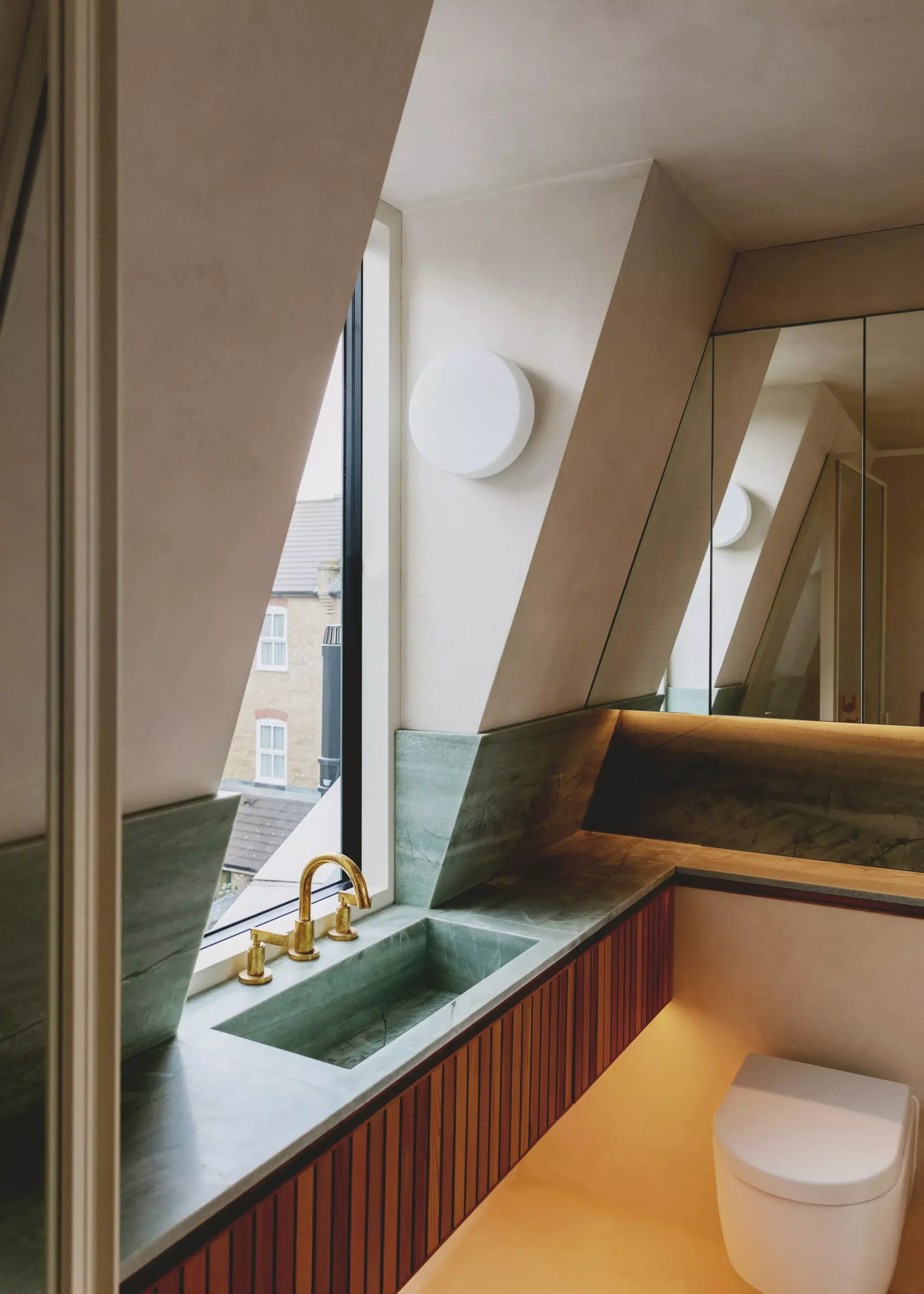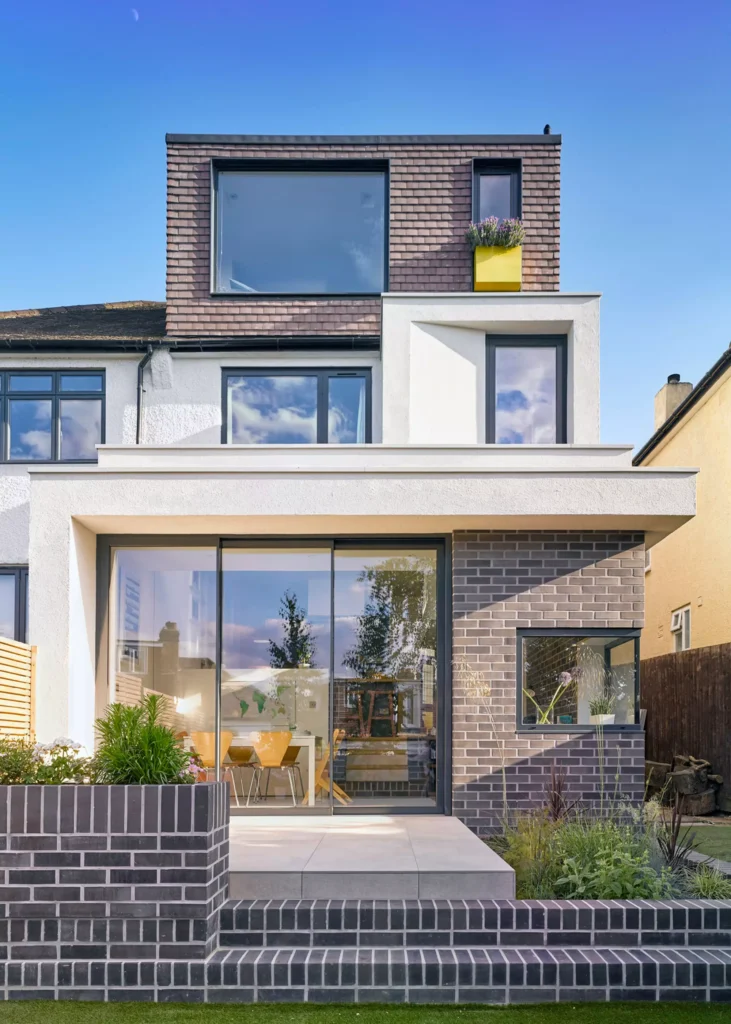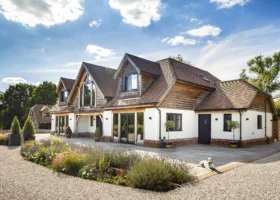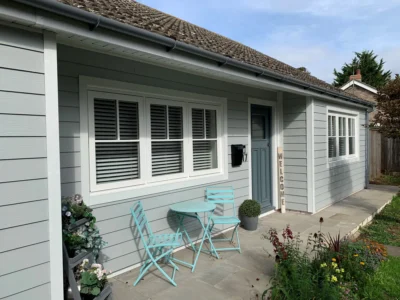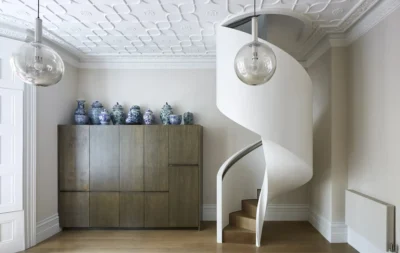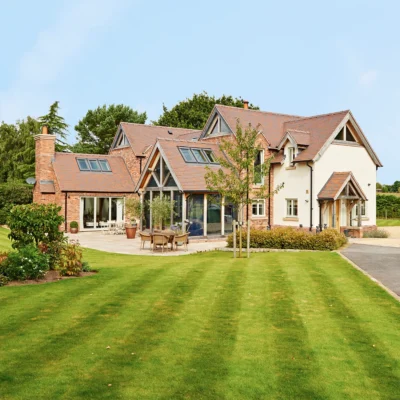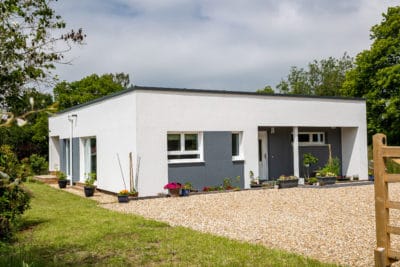Loft Conversions: 10 Key Questions to Ask When Converting a Loft
Loft conversions are a great option for those seeking out bedrooms or living space without extending into the garden. But before you begin drawing up your loft conversion plans, it’s worth finding out exactly what it will involve and how it will affect the design of your home.
This will involve assessing the roof and floor structure, the staircase design that’ll connect the two stories, how you’re able to get light into the new room and any insulation required.
This step-by-step guide to loft conversions reveals the 10 key things you need to consider when weighing up whether a loft conversion is the right way to add more space to your property.
1. Can my home take the weight of a loft conversion?
Clearly building a loft conversion will add weight to your house and, although it may only be a modest increase, you’ll need to make sure that the structure of the building can take it.
To do this, you or your builder will need to expose the foundations and check them, together with any beams or lintels that will be asked to carry more weight.
Loft conversions are a great option for those seeking out extra space without extending into the garden. But before you begin drawing up your loft conversion plans, it’s worth finding out exactly what it will involve and how it will affect the design of your home.
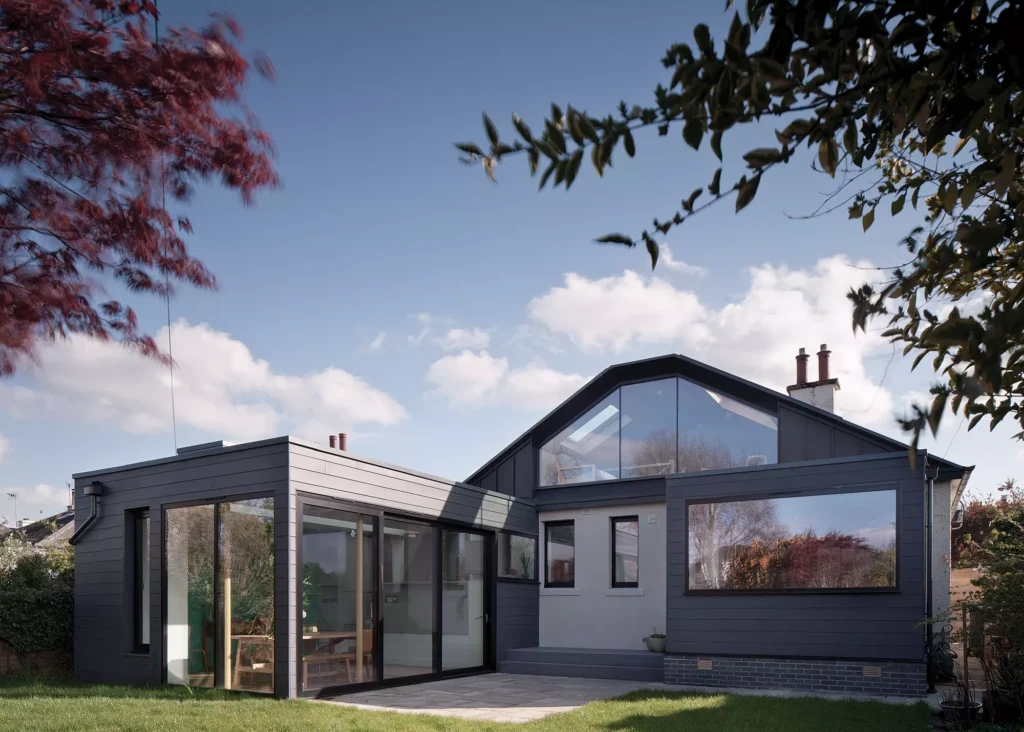
With the help of Chambers McMillan architects, John and Susan Yates completely transformed this traditional single-storey build by converting the loft into livable space as they felt they could benefit more from the solar gain in a living zone instead of a bedroom. Some locals were concerned that the loft conversion’s dormer window would overlook them, but the model demonstrated this wouldn’t be the case. Photo: David Barbour
Your Building Control officer will also want to check all these elements, so dig a small hole to expose the foundations first. If it turns out that your house needs underpinning to support the extra weight, it could double your budget before you start. So this is a key consideration when planning how to convert your loft.
2. How much head height do loft conversions require?
Get your designer to illustrate clearly how much headroom you’ll have in your loft once it’s converted – people are often disappointed by how much space they have to actually stand up in and on plans this isn’t always clear.
Don’t forget you’ll have to accommodate a staircase leading up into the loft. To make the best use of space the new staircase should rise above the old one and not from within an existing bedroom. There’s not much point in converting the loft space if it means losing an entire room on the first floor.
Without the roof space for water tanks and plumbing, the heating and hot water system may have to be replaced with a sealed system. It’s better to have an unvented hot water cylinder than a combination boiler, but it will take up a cupboard-size room and you’ll need to find somewhere to put it.
Looking for design ideas for your loft conversion project? Take a look at these Loft Conversion Ideas: 13 Amazing Projects to Inspire Your Attic Renovation
EXPERT VIEW Calling in quotes for loft conversionsOne of the key steps in the search for the right builder is understanding and comparing quotes. Deepak Sing Udassi from City Lofts London reveals why obtaining quality quotes is all about the planning. Start by writing a design brief. Think about why you are undertaking this project and detail the must-haves, should-haves and could-haves. Then invest in quality drawings. For simple, non-structural home improvements you could probably go straight to the builder; for anything else hire an architect to produce detailed plans. The next step is to shortlist prospective builders. Seek recommendations from friends and family, and find accredited professionals through the Federation of Master Builders’ Find a Builder service. Invite a minimum of three builders to quote. Give the same detailed plans to each builder, and ask them the same questions, so you can easily compare quotes. Check each quote you receive contains plans referencing everything in the scope (as well as things that are considered out of scope) and a full fixed price (stating whether it includes VAT). It should also detail any assumptions or special considerations the builder has made about the project. Before you accept, carry out your own due diligence. List any concerns and have your builder reply in writing. Request references, visit past or current projects, and check their credentials (such as FMB registration) and insurance documentation. The quotes you receive will only be as good as the pre-work you put in, the thoroughness of the plans you provide and the suitability of your builder shortlist. Deepak Singh Udassi is MD of City Lofts London, a Master Builder company that specialises in high-quality loft conversions. He also runs RIBA architectural practice Architecture 100, specialising in house extensions. This 360-degree experience gives Deepak a valuable, end-to-end overview of the house extension process. |
3. Building Regulations & Party Walls for loft conversions
Loft conversions always need approval under Building Regulations (irrespective of whether they need planning permission) so it pays to adopt the full plans application approach and have a detailed scheme approved before you find a builder.s
Having an approved design will take much of the risk out of the work and also mean the builder has a chance to give you a fixed quotation, rather than a vague estimate.
If your house is semi-detached or terraced don’t forget to notify your neighbour of your proposals, which will usually fall under the Party Wall Act 1996.
Your Building Control officer will inspect the work at various stages and on a final inspection should issue you with a completion certificate. Don’t settle any final accounts with contractors until you’ve received the certificate.
Are you needing advice on Building Regs? Read our full Guide to Building Regulations
4. How do I alter my roof’s structure & floor joists?
Most roofs are constructed with internal support struts in the loft, propping up the rafters and purlins (horizontal roof beams) in traditional cut and pitched roofs, and making up the web of braces in modern trussed rafter roofs.
All these have to be removed to make way for the new room and replaced with new supports that don’t encroach on the space available in the loft void.
Learn More: Roof Design: Roofing Materials, Construction and Planning
CLOSER LOOK How much do loft conversions cost?This cost guide is provided by the Build It Estimating Service. It is based on a straightforward dormer loft conversion with a useable internal floor area of 20m2.
|
There are many ways of altering roof structures for loft conversions, but they all have one common element –the ceiling joists will almost certainly be inadequate as floor joists. This means that new floor joists are fitted alongside them, slightly raised above the ceiling plasterboard to avoid contact with it.
These joists (often 200mm or 225mm in depth) will rise above the tops of the current ceiling joists to form the floor structure. Depending on their span they will bear either directly on to the existing wall plates of external and internal load-bearing walls, or on to newly installed beams.
In smaller lofts, it is often the case that the floor joists themselves will be used to support the sloping rafters. This is possible by constructing a dwarf timber stud wall 1m to 1.5m high, known as an ashlering, between the two. With the supporting ashlering in place, the internal struts and braces can now safely be removed.
CASE STUDY Bright & open loft conversionClever planning and storage features were key to the success of this new loft conversion, designed by Studio Hagen Hall. The space holds a master bedroom with two large windows in the vaulted ceiling to maximise light. The interior features built-in invisible timber storage throughout, blending seamlessly with the clay render walls for a minimal interior style. 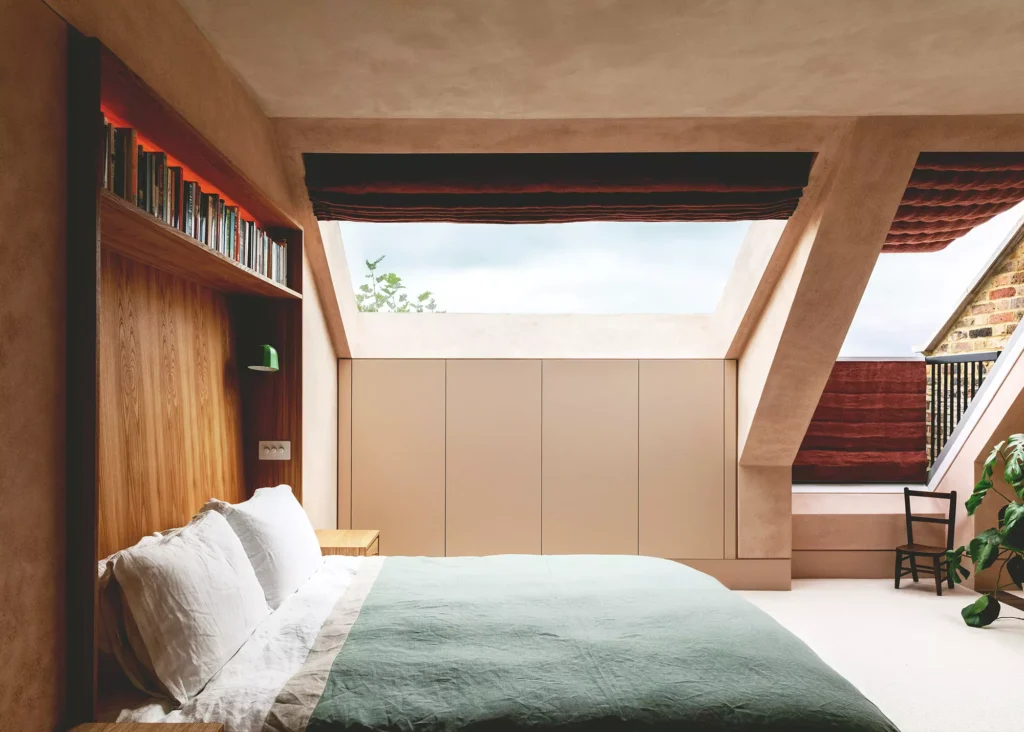 The loft conversion’s bathroom boasts a luxurious sea-green quartzite surface, with a large inset window and mirrored vanity units that bring a light, open feeling to the narrow space. Following the bathroom around a curved wall, the shower is illuminated by a semi-circular rooflight above for sky views and abundant natural light.
|
5. How can I design a staircase for my loft conversion?
Stairs are invariably tricky to design for loft conversions, as space for them is tight. Narrow winding flights are acceptable, but may prove impractical, because it’s difficult to get furniture up them.
Purpose-built staircase designs are around 10 times the cost of standard (off-the-shelf) designs, so bear this in mind when you’re planning your loft conversion.
If you do need a purpose-built loft conversion staircase, it pays to have the design approved by your Building Control officer before you actually commission them. Ask your joiner or builder to send Building Control a copy of the design.
As part of the fire safety upgrade for your loft (keep reading) your stairways should lead to a hall and an external door. If you have an open-plan arrangement where the stairs rise from a room, it is likely you’ll have to alter it, fitting a new partition wall or choice of escape routes.
More Design Inspiration: 20 Staircase Design Ideas: Plan & Design Your Perfect Staircase
6. Where should I fit windows for a light-filled loft conversion?
You don’t need to make a lot of structural alterations to accommodate rooflight or skylight windows in your new loft conversion, which makes them relatively easy to fit. Typically the rafters on either side of the rooflight are doubled-up and trimmed across the top of the opening.
A popular alternative is to fit dormer windows, which are structures in themselves, as they have walls and a roof as well as the window itself.
At the rear of many homes dormer windows can fall into the permitted development quota and so may not require planning permission. At the front of the house, however, they will require planning permission, which is why you often see rooflights or skylights instead.
Dormer windows may be essential to maximise the headroom in the loft and provide useable space, but will need to be supported at the apex point (ridge). A ridge beam is installed beneath the apex before the dormer roof joists can themselves be fixed in place and the roof weathered.
It is at this stage, when the dormer windows are being constructed, that your loft conversion will be exposed to the elements, so you’ll need good temporary sheeting to protect against the weather.
Looking for projects you can do without formal planning consent? 23 Projects You Can Do Without Planning Permission
CASE STUDY Loft conversion with picture windowThis semi-detached London home dates back to the 1930s, and so the owners decided it was time for an upgrade. The design, by Selencky Parsons architects, called for a complete internal remodelling of the home. This came in the form of a ground floor extension featuring a three-panel set of IDSystem’s ultra-slim sliding door system, along with a loft conversion to increase usable space for the family. The loft conversion not only increases the number of bedrooms in the house but allows the home, built on the side of a hill in West Norwood, to enjoy a stunning panoramic view over the skyline of Central London from the master bedroom. |
At the rear of many homes dormer windows can fall into the permitted development quota and so may not require planning permission. At the front of the house, however, they will require planning permission, which is why you often see rooflights or skylights instead.
Dormer windows may be essential to maximise the headroom in the loft and provide useable space, but will need to be supported at the apex point (ridge). A ridge beam is installed beneath the apex before the dormer roof joists can themselves be fixed in place and the roof weathered. It is at this stage, when the dormer windows are being constructed, that your loft conversion will be exposed to the elements, so you’ll need good temporary sheeting to protect against the weather.
Read More: Rooflights and Overhead Glazing: Design Ideas and Advice
7. How can I ensure my loft conversion is fire safe?
Loft conversions on bungalows have little effect on the fire safety of your home, beyond making sure that the new windows are large enough to escape out of. But in a house where two storeys become three, there are implications.
The new floor will need at least 30 minutes of fire-protection, which could mean re-plastering the ceilings below it and the loft room will have to be separated by a fire door, either at the top or bottom of the new stairs. You’ll also need one escape-sized window per room – some skylight windows are made specifically with this in mind.
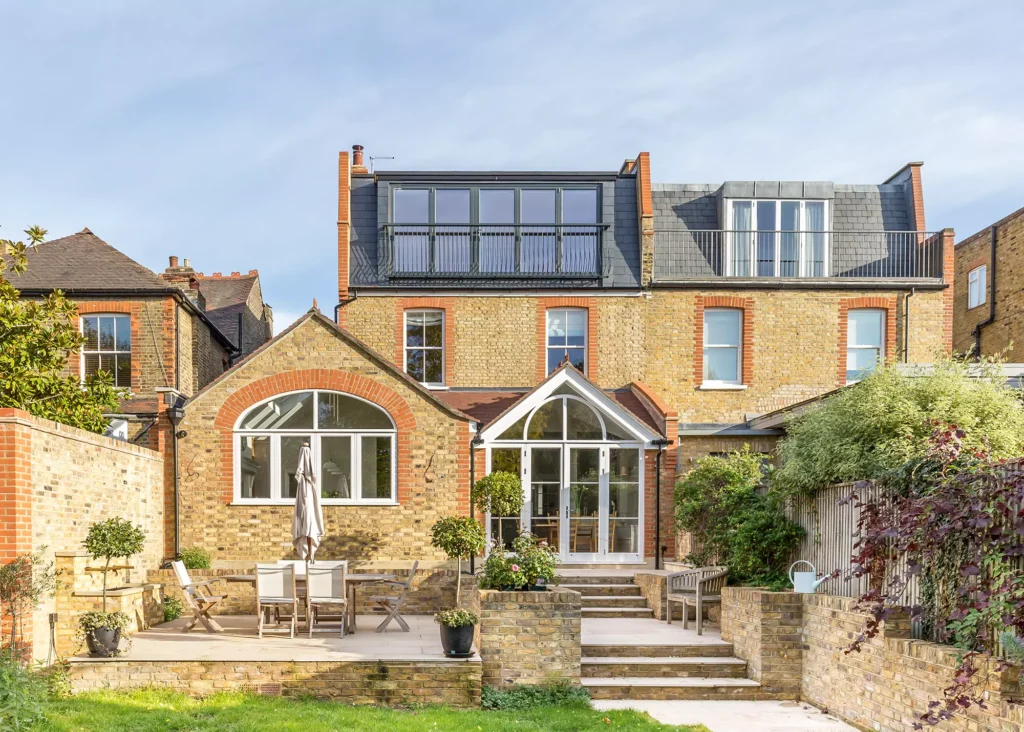
Life Size Architecture, a Brighton-based team of architectural designers and technologists, designed this stunning rear and side extension and loft conversion to this home located in a conservation area. The architects commissioned Attic Conversions Ltd to carry out the works of the mansard roof addition, which features bifold door openings and a metal balustrade.
Door self-closing devices are no longer required in homes. They’ve proven to be a risk to children’s safety because they can trap tiny fingers. Instead, existing doors on the stairway (ground and first floor) should be replaced with fire-resistant doors or upgraded – and this should be indicated on your loft conversion drawings for Building Control.
As part of the electrical installation, mains-powered smoke alarms should be installed on each floor of your home and these should be interlinked so that they all sound when one is activated. Most have a re-chargeable battery as a back-up that allows the supply to be extended from a lighting circuit if need be.
8. What kind of insulation do loft conversions need?
With energy efficiency standards being increased, loft conversion insulation is more difficult to install than it once was. If you are replacing the roof tiles at the same time, you can insulate between the covering and the rafters, which will also achieve good airtightness.
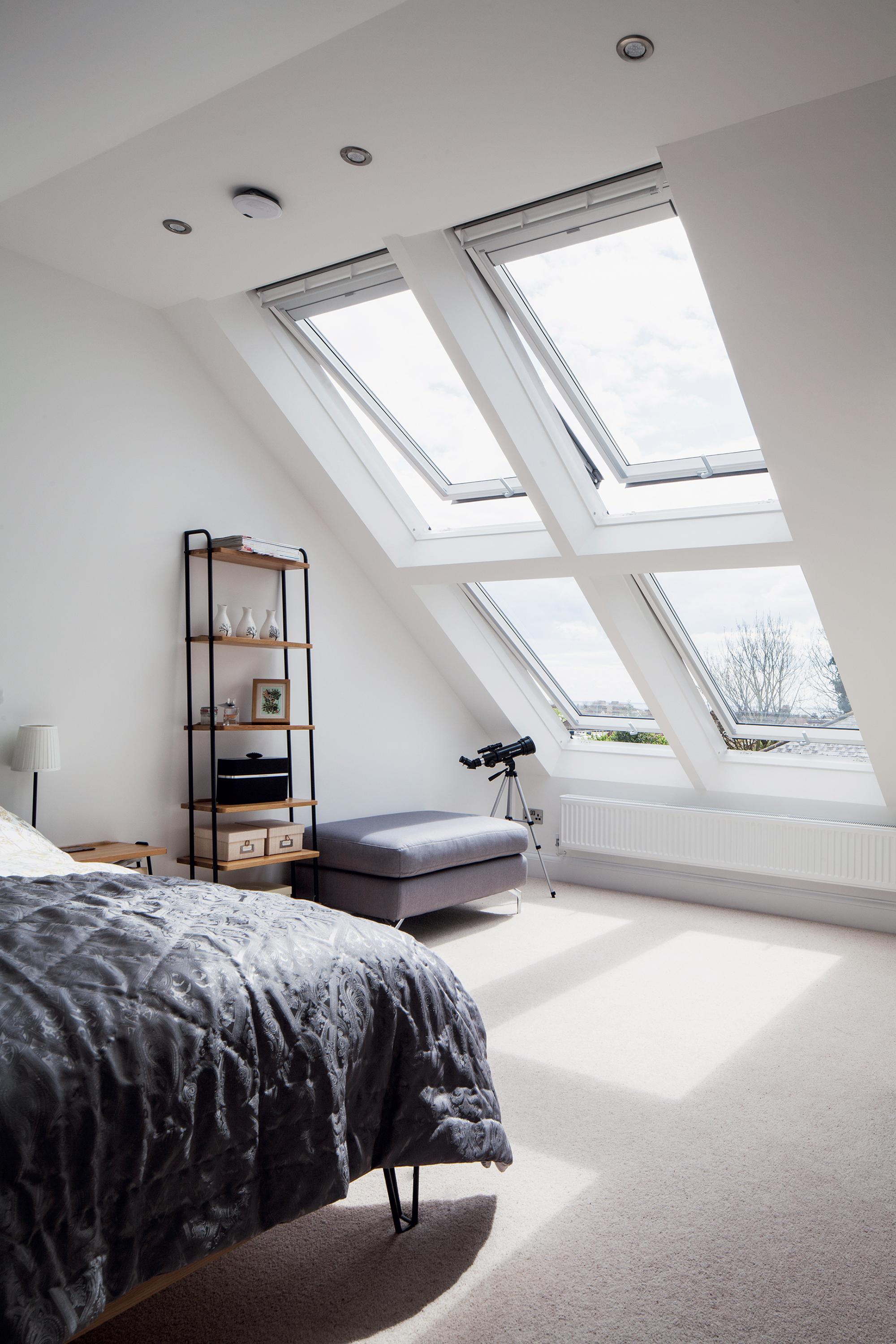
Adrian and Maria Pearcey converted their 1930s house with a loft conversion to make space for an extra bedroom. For the new master bedroom in the attic, the couple wanted to maintain a sense of being up in the eaves of the dwelling. The zone feels bright and spacious with four large Velux windows allowing copious amounts of light to stream into the bedroom
If you’re not replacing the roof, the sloping ceiling will need insulation cut and fitted between the rafters, as well as on the underside of the rafters. As the plasterboard will have to be fixed to the rafters through the bottom layer of insulation, you will want this insulation to be as thin as possible.
You should use some high performance insulation (typically a foam board) for all of these areas. The ashlaring walls and dormer window structures will also need insulating with similar products before they are plasterboarded.
9. What level of sound insulation will my loft conversion require?
The new floor also needs soundproofing, and this is easily achieved by laying a mineral fibre quilt between the joists. Use the heavier, denser sound insulation quilt and not the lighter thermal insulation material, which is of no help here. The same goes for any internal stud partitions between bedrooms or bathrooms.
You should also consider insulating any party walls, both against heat loss and noise. A lining framework of timber stud will allow you to achieve both and you can cover it with sound-rated plasterboard.
Learn More: Insulating and Soundproofing Internal Walls
10. How can I maximise storage in my loft conversion?
When you convert your loft you are, of course, going to lose storage space. Make the most of what you have by using the eaves behind the ashlaring – fit access hatches and have roll-out storage bins made to fit. And if you insulate down the rafter line to the eaves you’ll create a warm store for your belongings.
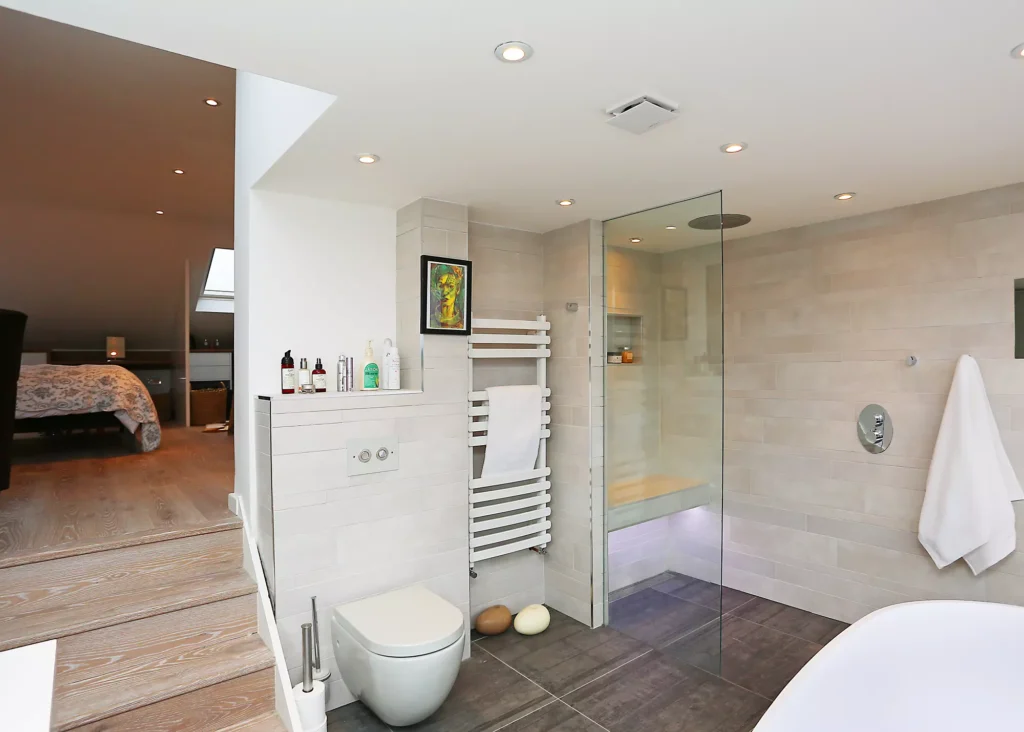
A Victorian terrace in south London had a maximum permitted development allowance of 40m³ to convert the loft, which was achieved with two dormers and a 2m head height, completed by Design and Build company Plus Rooms
Built-in wardrobes are also a great feature in loft bedrooms, where standard units won’t fit – and are among the most innovative loft storage conversion ideas.
Featured image: John and Susan Yates‘ converted bungalow. This article was originally published in 2020 and has been updated in 2023.
































































































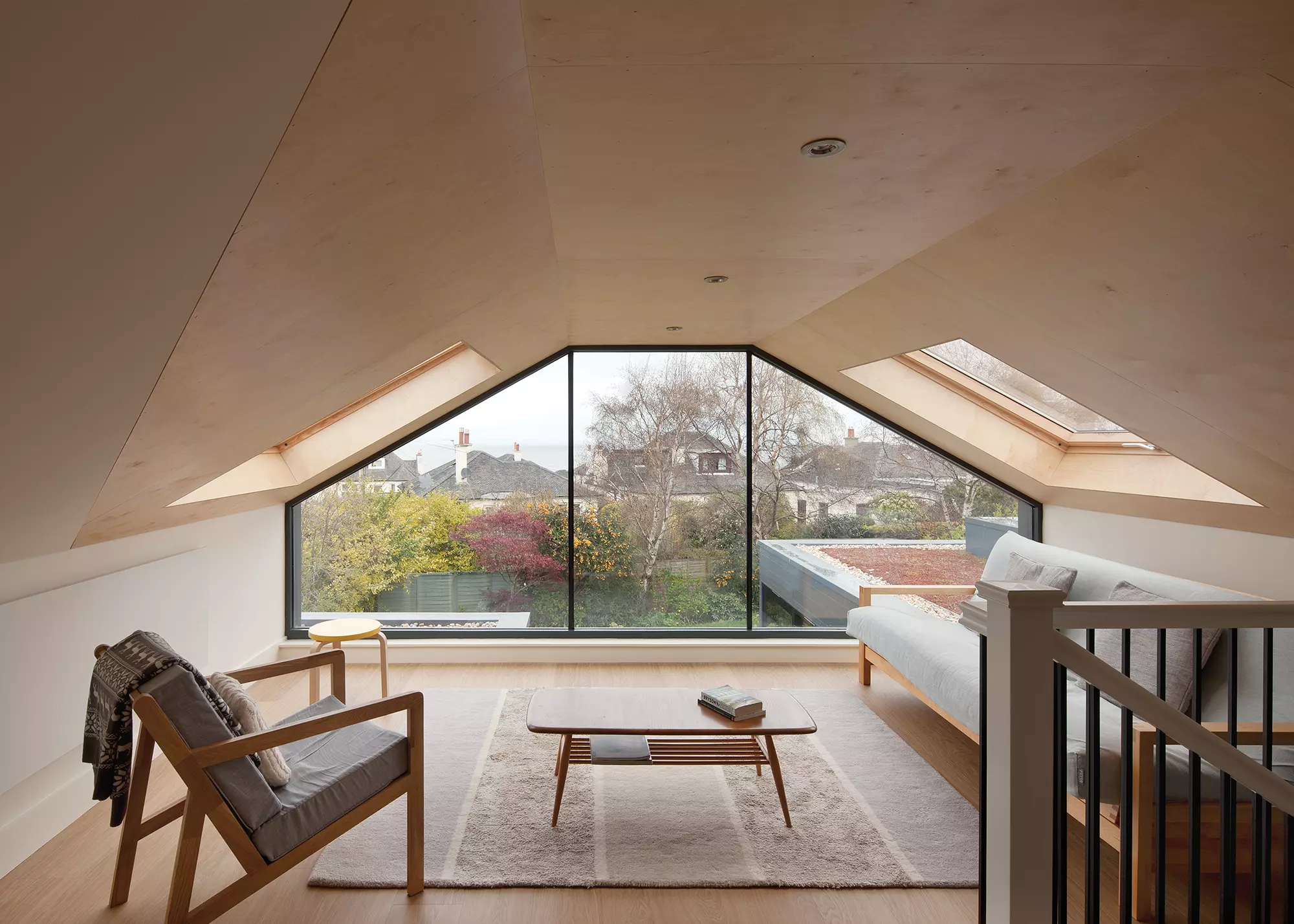
 Login/register to save Article for later
Login/register to save Article for later
